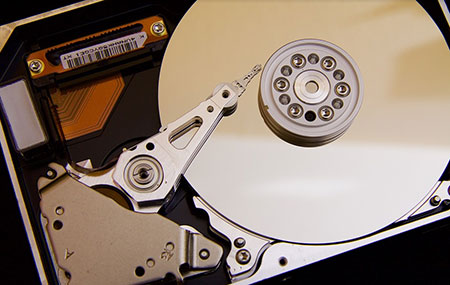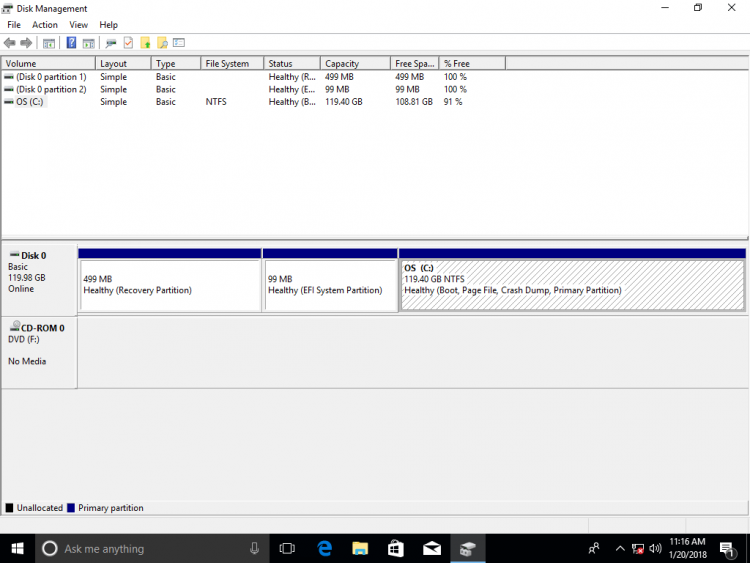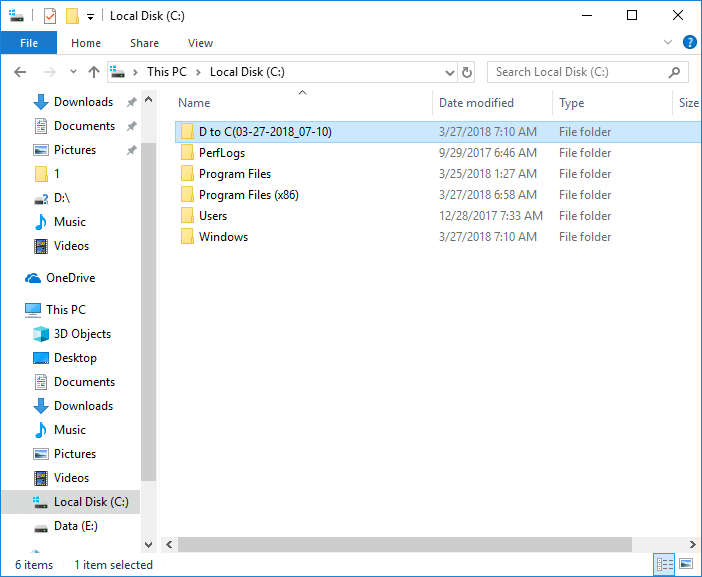How to Merge Disk 0 and Disk 1 Windows 10
To optimize disk space, sometimes you need to shrink, extend, move or combine 2 partitions. Two typical example why merging partitions for Windows 10/8/7 computer: 1, system C drive runs out of space, by combining it with another partition you can increase C drive free space. 2, there are too many volumes causing it difficult to locate the partition and files that you need. In this article, I'll introduce detailed steps to merge partitions in Windows 10/8/7 without losing data. Combine partitions with Windows native tools and best free partition software. Select the corresponding tool and method according to your own disk partition configuration.
Content:
- 3 ways to merge partitions in Windows 10/8/7 computer
- Combine partitions with Windows 10 Disk Management
- How to merge partitions using Diskpart command
- How to merge partitions with free partition editor
- Shortages to merge 2 partitions in Windows 10/8/7
- About merging partitions on disk 0 and disk 1 (separate disk)

3 ways to merge partitions in Windows 10/8/7 computer
To combine partitions in Windows 10 and Windows 8/7, there are 3 choices: Disk Management, diskpart and 3rd-party partition software. Disk Management is a built-in component of all Windows Operating System, which can do some basic management operations such as create, delete and format volume. From Windows 7 Disk Management, new Shrink and Extend Volume functions are added to help change partition size without losing data (in most cases).
Windows 8 and 10 inherited the same functions without any improvements. There's no Merge Volumes function built in Disk Management, but you can merge 2 partitions via another Extend Volume function indirectly.
Unlike Disk Management that has graphic interface, Diskpart works via command line. It is a bit difficult to common users. Although these 2 native tools work in different way, they have same limitations while merging partitions in Windows 10/8/7 computers:
- Both partitions to be combined should be the same Primary or Logical.
- Both partitions are on the same disk.
- The destination partition must be formatted with NTFS file system.
- They cannot merge 2 non adjacent partitions.
- They can only merge a volume into the left contiguous one, for example: merge drive D to C, or merge drive E to D.

Third party software has no such restrictions, and it's much easier via several clicks. Let's see how to merge partitions in Windows 10/8/7 with each tool.
① How to combine partitions in Windows 10 Disk Management
As I said above, Windows 10 has no merge volume function. The merging operation is realized via another Extend Volume function. This function can only combine Unallocated space to the contiguous partition on the left. Therefore, you have to delete the right partition in advance by yourself. If you cannot delete this partition, run third party software. If you can, remember to back up or transfer files before deleting.
Steps to merge partitions in Windows 10 using Disk Management:
In a short time, original drive D is merged into C drive.

If you use Windows 7 or 8, press Windows and R keys together, type diskmgmt.msc and press Enter to open Disk Management.
② How to merge partitions using Diskpart command
The same with Disk Management, to merge Windows 10 partitions with diskpart command, you must delete the right partition in advance and merge Unallocated space to the left partition. If you don't want to delete any partition, jump to the next section.
Steps to merge partitions in Windows 10/8/7 with Diskpart cmd:
- Transfer all files in the right partition to another place.
- Press Windows and R hot-keys, type diskpart and press Enter, then the command prompt window will be opened.
- Input list volume and press Enter, then you'll see all partitions in a list.
- Input select volume D and press Enter. (D is drive letter or number of the right partition.)
- Input delete volume and press Enter.
- Input select volume C and press Enter. (C is drive letter or number of the left partition.)
- Input extend and press Enter.
Some people like to use Windows native tools thinking they have best compatibility, but it's not true at least to disk partition management. 3 major reasons why third partition software is better:
- Neither Disk Management nor Diskpart command is 100% secure, I've encountered the issue several times that Disk Management destroyed my partitions.
- Both native tools cannot cancel or undo any operations, even if you did anything wrong.
- Third party software has much more features such as convert, copy, wipe, scan.
③ How to merge partitions with free partition editor software
To help merge partitions for Windows 10 computer, there are many third party partition software. Better than other tools, NIUBI Partition Editor has unique 1-Second Rollback, Virtual Mode and Cancel-at-well technologies to protect your system and data. It has free edition for Windows 10/8/7/Vista/XP home computer users. To do any operations, you just need to click, drag and drop on the disk map. When you merge 2 contiguous partitions, all files will be moved to a folder in root directory of the destination partition automatically.
Steps to merge Windows 10 partitions without deleting volume or losing data:
Step 1: Download NIUBI Partition Editor, right click either partition that you want to combine and select "Merge Volume".

Step 2: In the pop-up window, click the check-boxes of both partitions and then clickOK.

When you merge two data volumes, you can select either one as destination in the drop-down box. But when merging C and D drives, you can only select C as destination, because system partition can't be removed. So, merging system partition C: to data volume (D:) is disabled.
Step 3: PressApply button on top left to take effect. (Real disk partitions won't be changed until you click Apply to confirm).

After merging volumes complete, open the destination partition (here is C:) in Windows Files Explorer and you'll see a fold that that is named asD to C(date and time). All files of D will be moved to this folder automatically.

Watch the video how to combine partitions in Windows 10/8/7/Vista/XP (32 and 64 bit):

Shortages to merge 2 partitions in Windows 10/8/7
One of the partitions will be deleted no matter which tool you use, it doesn't matter if you want to combine two data drives. But if you want to extend C drive by merging D, it is not suggested, because:
- You'll lose data if you forget to back up or transfer before deleting partition (with Windows native tools).
- All Windows services, application, shortcuts that point to D: drive will stop working after deleting.
- In some cases, you still cannot extend C drive after deleting D.
The best idea is shrinking D drive instead, part of free space will be released and all files keep intact, then add the Unallocated space to C drive. In this way, nothing will be changed except partition size. Better than Windows native tools, NIUBI Partition Editor can make Unallocated space on either left or right side when shrinking a partition, and merge Unallocated space to either contiguous or nonadjacent partition on the same disk. Follow the steps to expand C drive by shrinking other partitions:

About merging partitions on disk 0 and disk 1 (separate disk)
If you want to merge a data volume in Disk 1 to system C drive in Disk 0, no partitioning software can do this, because the size of a disk is fixed. If there is not enough free space on the same disk, you have two choices:
- Move a data partition in Disk 0 to another disk, then delete it and merge Unallocated space to C drive.
- Copy entire system disk to another larger one and extend partition with extra space..
Besides merging partitions in Windows 10/8/7/Vista/XP computer, NIUBI Partition Editor helps you do many other operations such as shrink, extend, convert, defrag, hide, wipe, scan bad sectors.
Download
How to Merge Disk 0 and Disk 1 Windows 10
Source: https://www.hdd-tool.com/windows-10/merge-partitions-windows-10.html